Have you ever wondered about the stories and secrets that lie within the historic train stations sprinkled across Montana’s vast landscapes?
We’ll take a closer look at the 13 train stations that dot the Montana landscape. From the architectural splendor of the Belton Historic Train Station to the cultural hub of the Wolf Point Train Station, each stop on our tour offers a unique glimpse into the state’s railway heritage.
I’ll share with you the transformative stories of these stations, how they’ve been preserved, and the role they continue to play in modern rail travel. Expect to uncover a blend of history, architecture, and the enduring spirit of the American West.
Keep reading to discover why these Montana gems continue to draw travelers from all walks of life, eager to explore the rich tapestry of the state’s railroading past.
- Related article: Transportation Choices in Montana
Get ready to hop on board as we get to know Montana’s unique train stations together. Let’s embark on this tour, shall we?
Visit Montana’s Train Stations
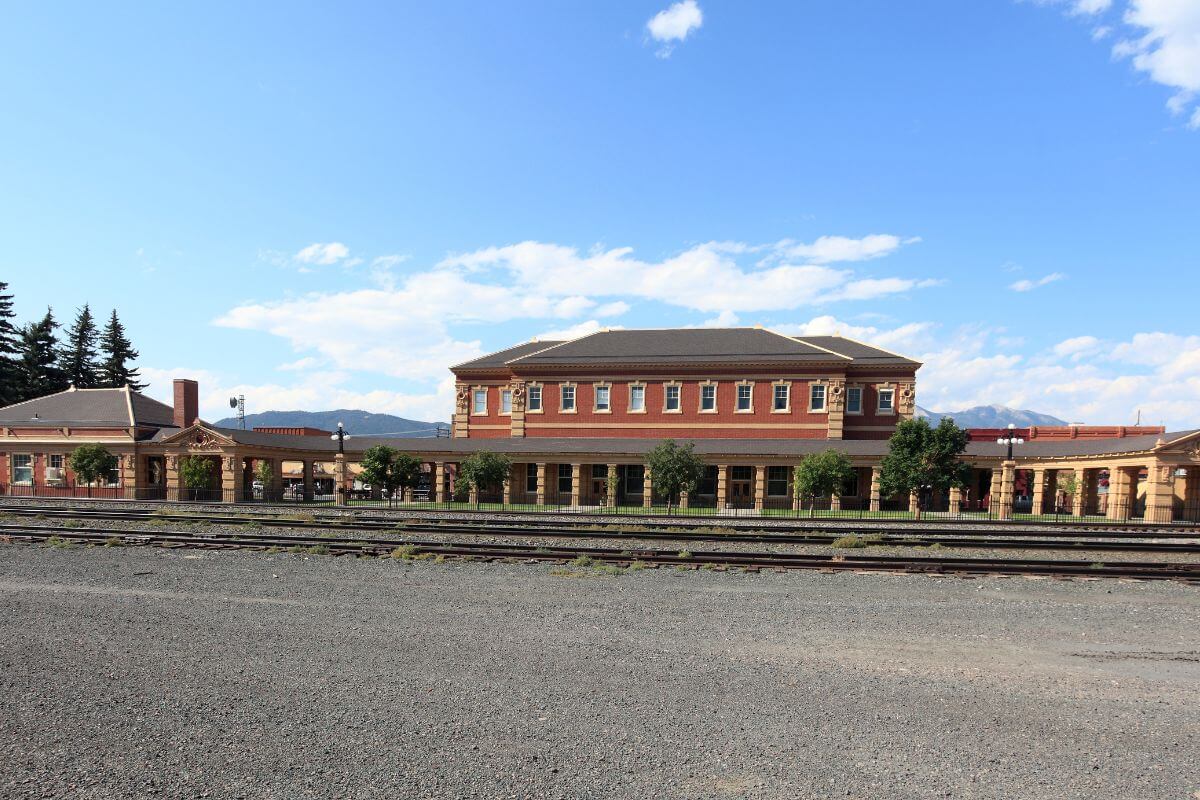
Let us discover Montana’s current 13 train stations, each embodying a unique blend of history and contemporary rail travel.
From urban hubs to stations amid serene landscapes, these sites offer a glimpse into the rich heritage of Montana’s railway networks.
1. Belton Historic Train Station
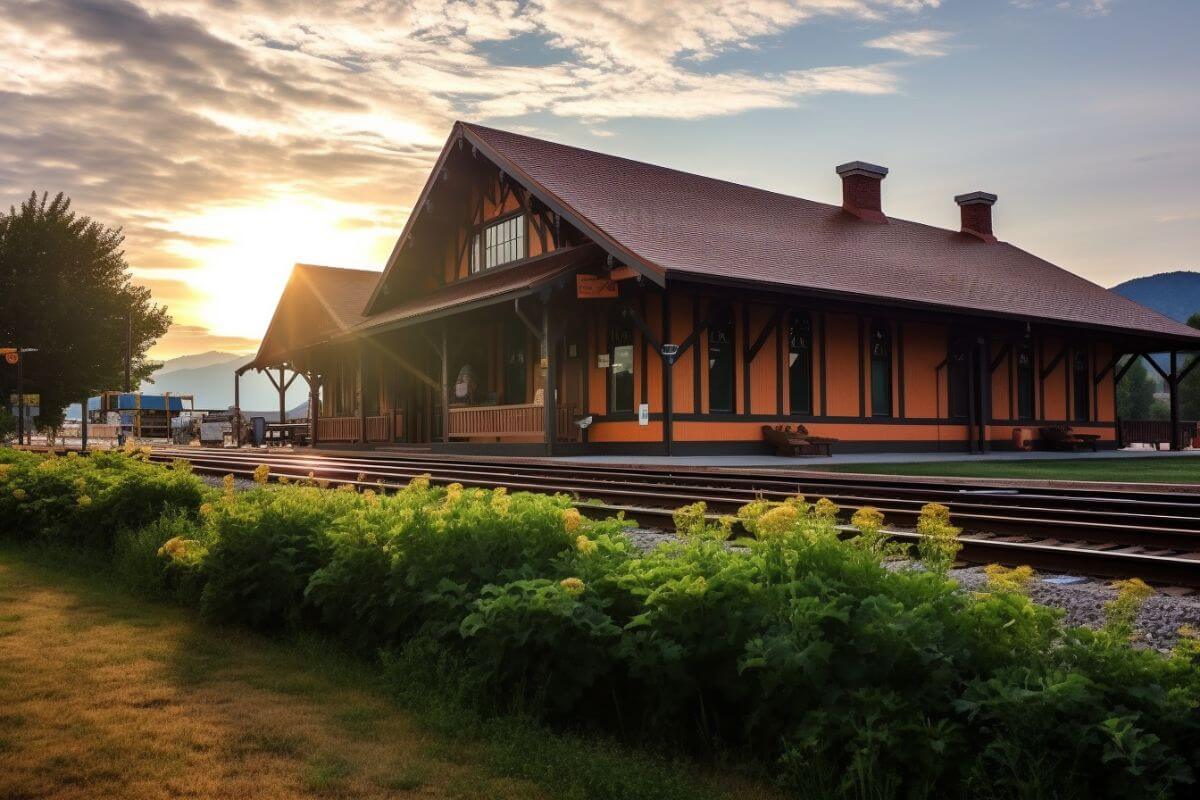
The Belton Historic Train Station, nestled in West Glacier, serves as a tangible time capsule, constructed in 1910 and expanded in 1935.
Abandoned by the rail company in the 1960s, this iconic structure found new life under city ownership, undergoing a loving restoration in 1983 and securing a listing in the National Register of Historic Places in 1979.
The station was donated by BNSF in 1991 and renovated by the Glacier Natural History Association, it now functions as a whistle-stop station, a charming museum, and the cherished home of the Glacier National Park Conservancy Store.
Its rich history and cultural significance continue to captivate visitors and cater to the needs of travelers and museum enthusiasts, solidifying its place as an essential historical and cultural landmark in West Glacier.
2. Browning Train Station
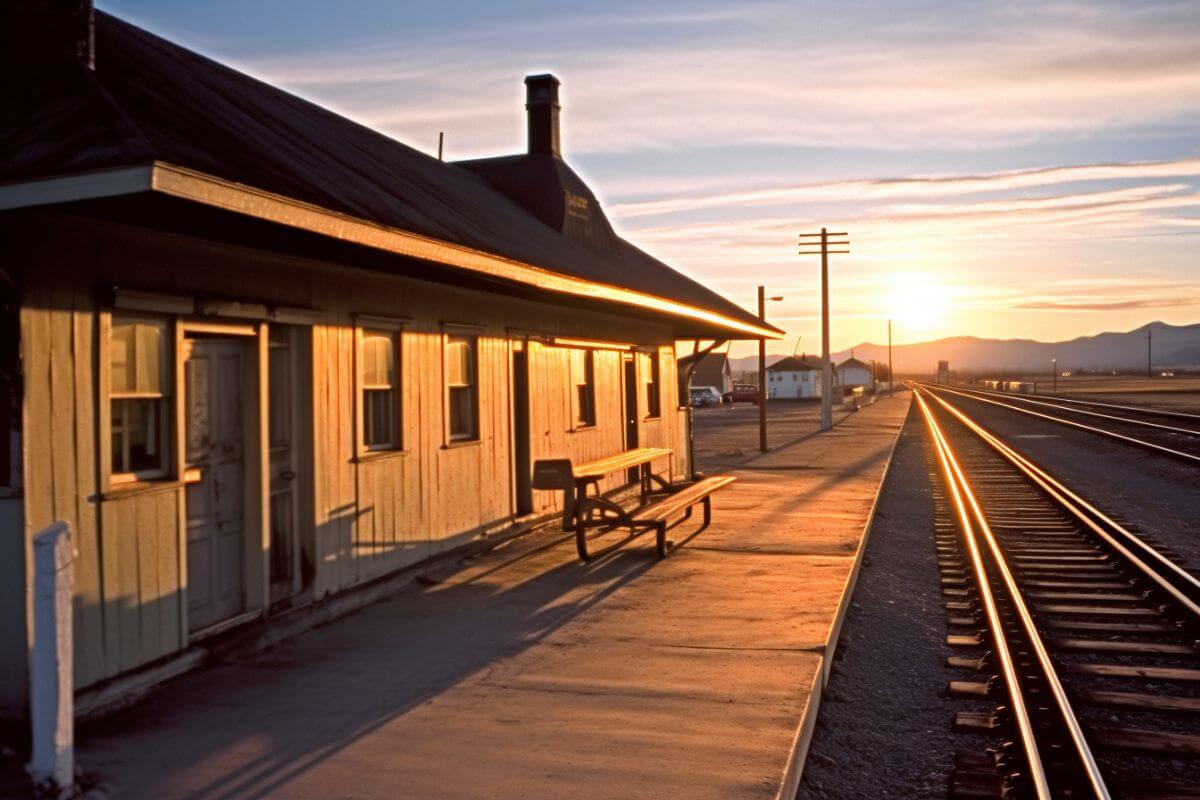
The Browning Train Station in Montana serves as a crucial seasonal stop along Amtrak’s Empire Builder route.
Notably, it acts as an alternative station for East Glacier Park during winter closures, holding a unique position as the sole station on the Blackfeet Indian Reservation and the eastern side of Glacier National Park.
Catering to Amtrak passengers, it stands as an essential point on the Empire Builder’s journey.
Ownership is divided, with BNSF Railway owning the station, platform, and parking, while Amtrak oversees the station facilities.
In 2012, Amtrak undertook a significant reconstruction, ensuring accessibility by adding a 110-foot concrete platform, ramp, lighting, wheelchair lift enclosure, and designated accessible parking spaces, enhancing the station’s usability and safety for all travelers.
3. Cut Bank Train Station
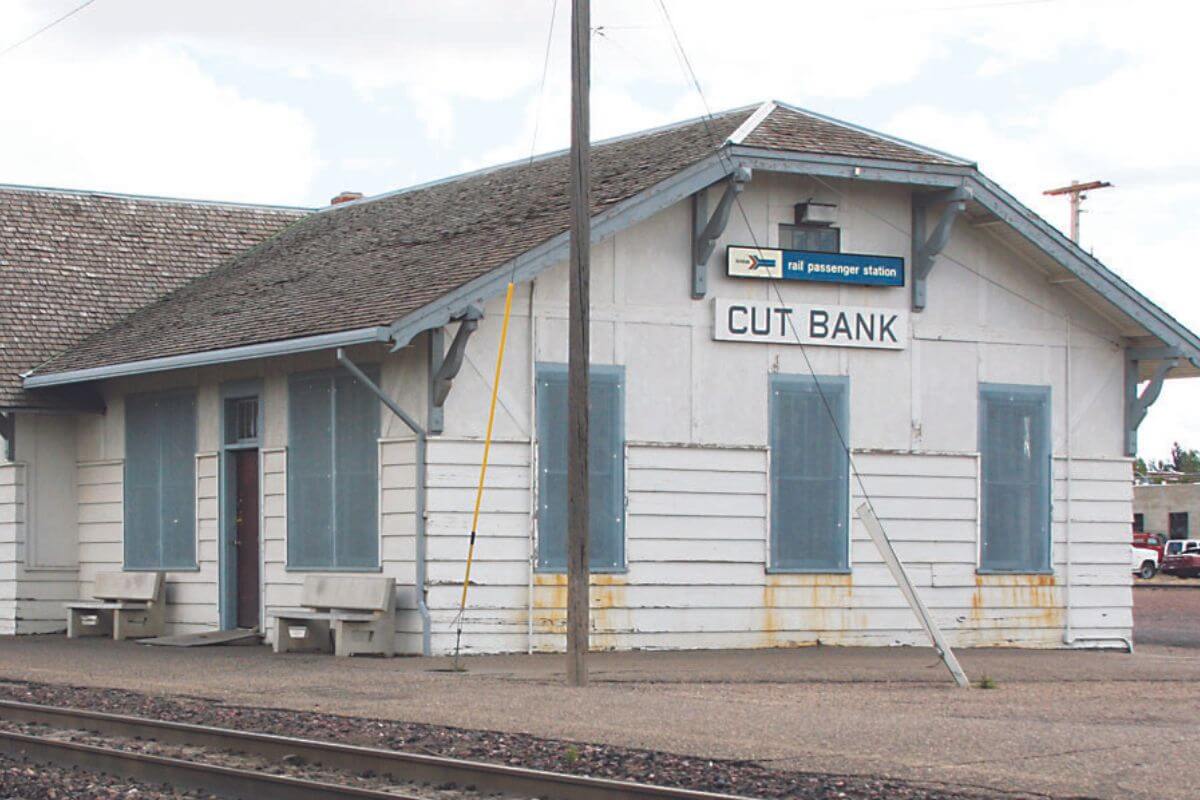
The Cut Bank Train Station in Montana, fashioned in a Swiss chalet style around 1918 by the Great Northern Railway, stands as a testament to architectural charm and historical significance.
The station is also listed on the National Register of Historic Places, it holds a distinguished status as a local landmark.
Positioned strategically along the Amtrak Empire Builder line, it serves as either the initial or final spot to view the majestic Rocky Mountains, depending on the direction of travel—a picturesque introduction or farewell to this stunning range.
It is also functioning as a seasonal stop for Amtrak’s Empire Builder, this is owned and is an Amtrak station station, while the adjacent yard, trackage, and signals belong to BNSF Railway.
Cut Bank itself, established in 1891, owes much of its growth and development to the railway, underscoring the town’s historical ties to the railroad and its pivotal role in shaping the community’s history.
4. East Glacier Park Train Station
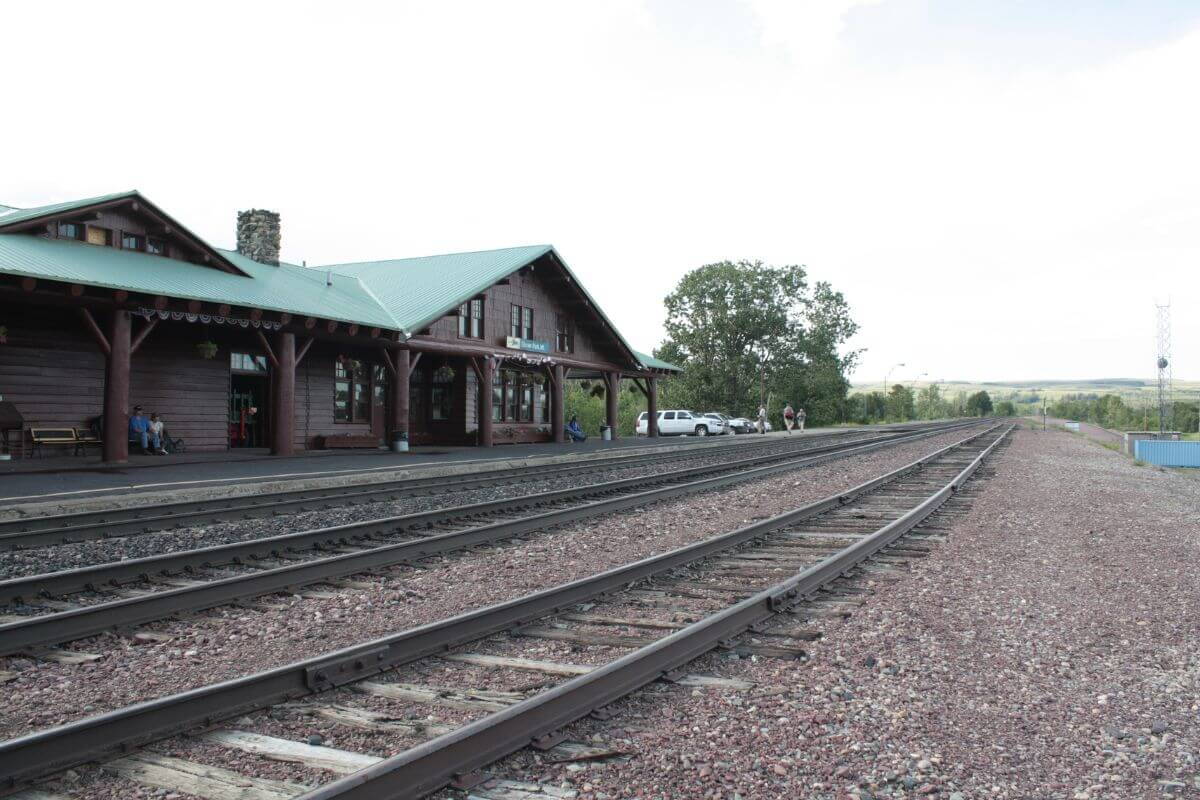
Nestled near the historic Glacier Park Lodge, crafted in 1913 by the Great Northern Railway, the East Glacier Park Train Station is an architectural marvel.
Its grand spaces, crafted from 500-800-year-old Douglas fir and cedar timbers transported from the Pacific Northwest by rail, embody both craftsmanship and logistical ingenuity.
Across the tracks from the emerging Midvale community, shaped by the railroad’s founding in 1891, this lodge signifies the era’s expansion fueled by railway connections.
The railway’s construction of Swiss chalet-type hotels in the region by the Great Northern Railway coincided with President William Howard Taft’s designation of Glacier National Park in 1910.
Adjacent to this iconic lodge, the East Glacier Park station is a key tourist attraction, providing access to the area’s rich history.
Its rustic design and inviting interiors draw travelers keen to explore Glacier National Park and soak in the ambiance of the nearby Glacier Park Lodge.
5. Essex Train Station
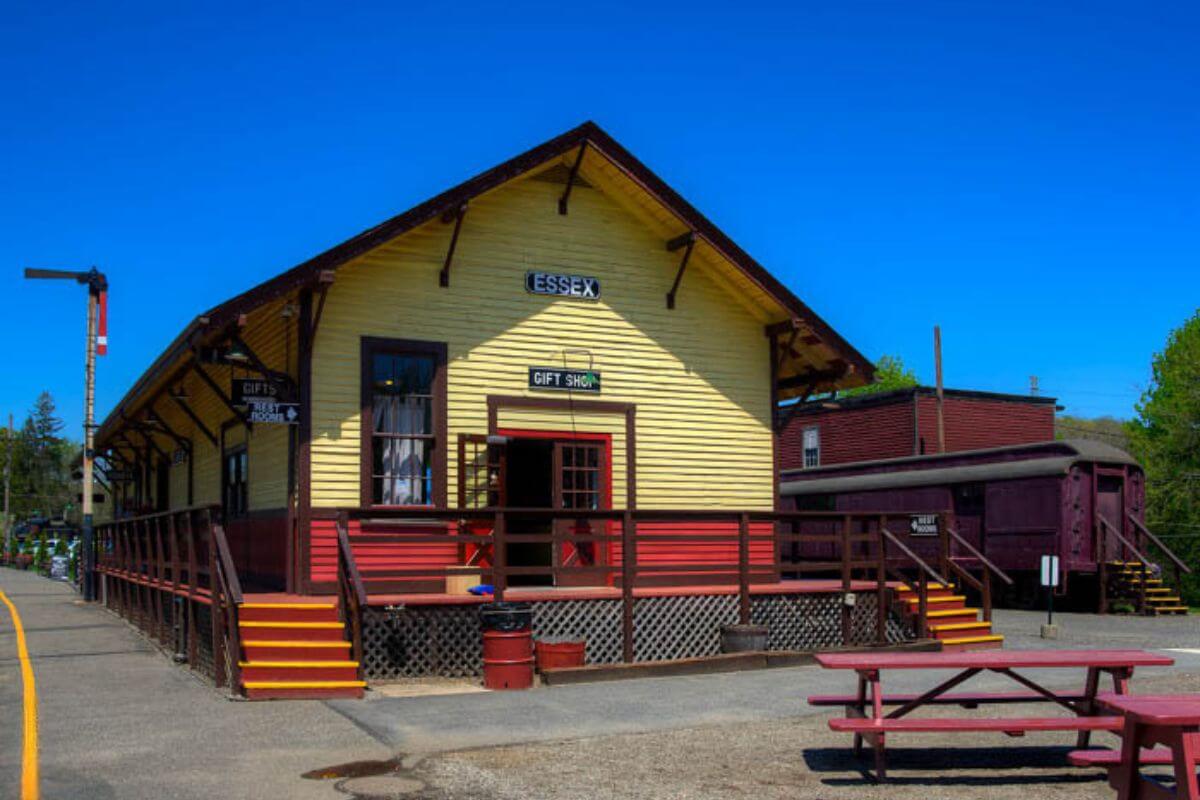
The Essex train station in Montana is a stop along Amtrak’s Empire Builder line.
Situated near the original station at Izaak Walton Inn, most passengers disembarking at Essex are visitors to this nearby historic Inn.
Interestingly, the Izaak Walton Inn was once planned to be an extra entrance to Glacier National Park, but World War II intervened, and that plan never materialized.
The former inn is a significant historical structure, and while the modern train station may be minimal in size, it serves a small number of travelers with a platform and minimal shelters for passengers.
Essex train station is a charming stop along the Empire Builder line, showcasing a blend of history and modern convenience for visitors exploring the beautiful Montana landscape.
6. Glasgow Train Station
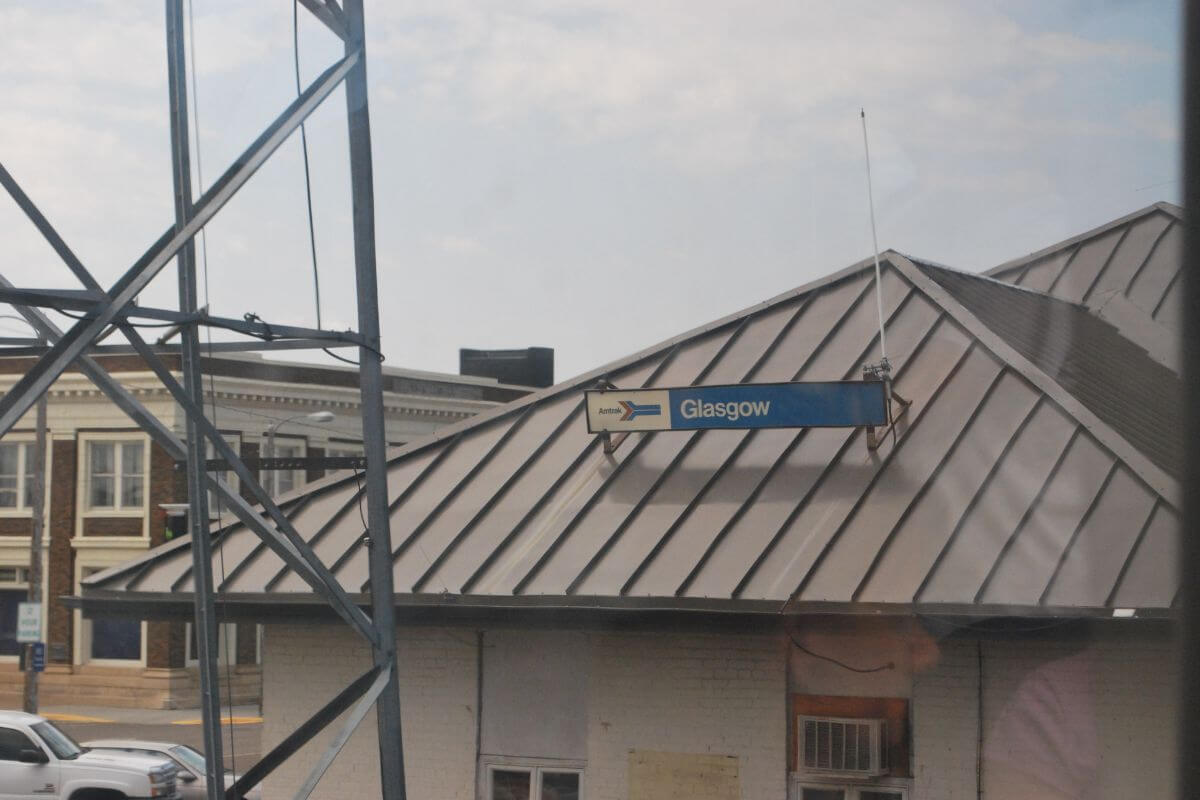
The Glasgow station in Glasgow, Montana, is a notable stop along Amtrak’s Empire Builder line, owned by BNSF Railway.
It is located at 424 1st Avenue South, Glasgow, Montana, United States, the station features a side platform and four tracks, complemented by accessible parking facilities for travelers.
The Glasgow station holds a significant historical role as a central Montana hub for travel and commerce.
It’s a fascinating place to observe the intersection of history and modern-day transportation.
The station is also within proximity to the Valley County Pioneer Museum, which is situated around 0.7 miles (1 km) away.
This museum is an absolute gem, with diverse exhibits covering dinosaurs, wildlife, indigenous cultures, and the rich history of the railroad in the region.
If you find yourself at the Glasgow station, do not miss the chance to explore both the station’s historical significance and the nearby museum’s captivating exhibits.
7. Hanover Boarding Station
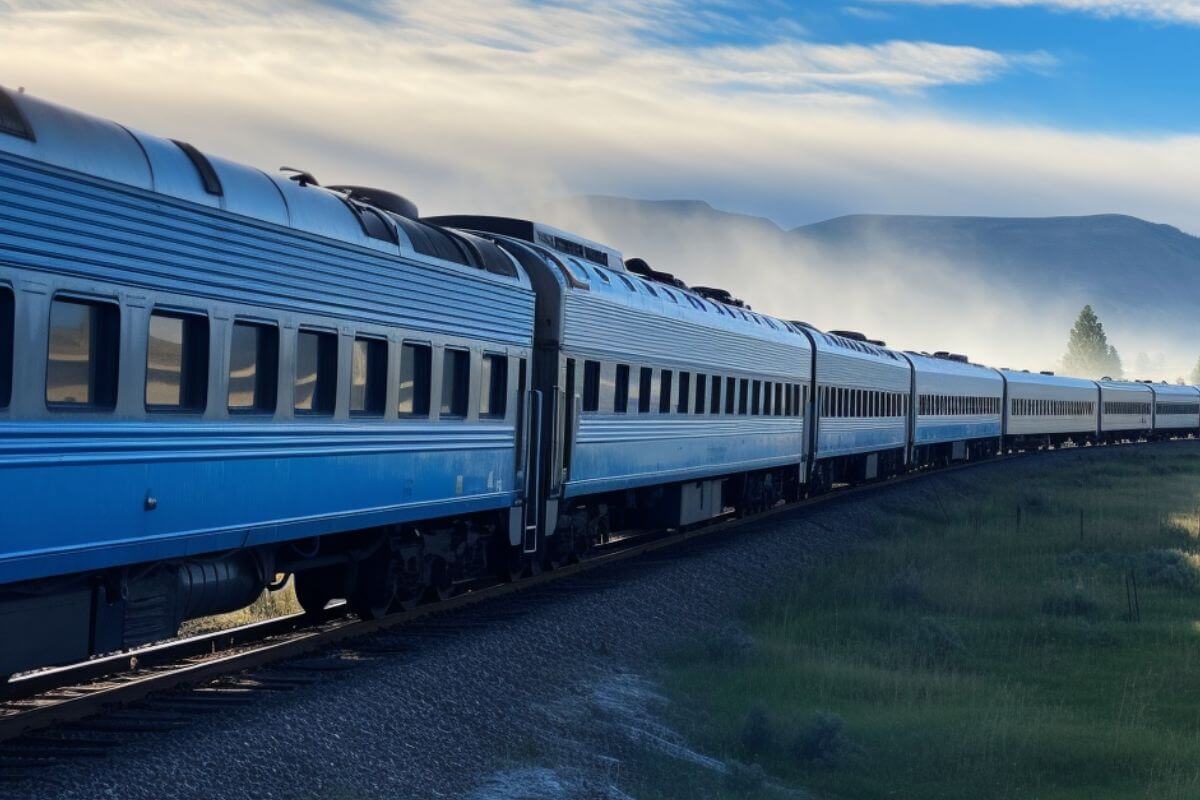
The Hanover Boarding Station in Montana stands as the launching point for the Charlie Russell Chew Choo train adventure in Lewistown.
This converted passenger rail service offers a 4.5-hour journey through Montana’s plains, combining scenic beauty with a delightful dinner included in the ticket price.
Located approximately 10 miles (16 km) from Main St, Lewistown, boarding typically commences an hour before departure.
The 56-mile round-trip journey promises stunning views of Montana’s landscapes, accompanied by fine dining. Passengers revel in a full-course brisket dinner while experiencing the sunset over Central Montana—an exquisite sight during the ride.
The Hanover Boarding Station served as the perfect starting point for this one-of-a-kind train adventure, allowing me to appreciate Montana’s wildlife and landscapes while indulging in a memorable dining experience.
For anyone looking to immerse themselves in the beauty of Montana while savoring a delicious meal, the Hanover Boarding Station is the ideal gateway to a great train journey.
8. Havre Train Station
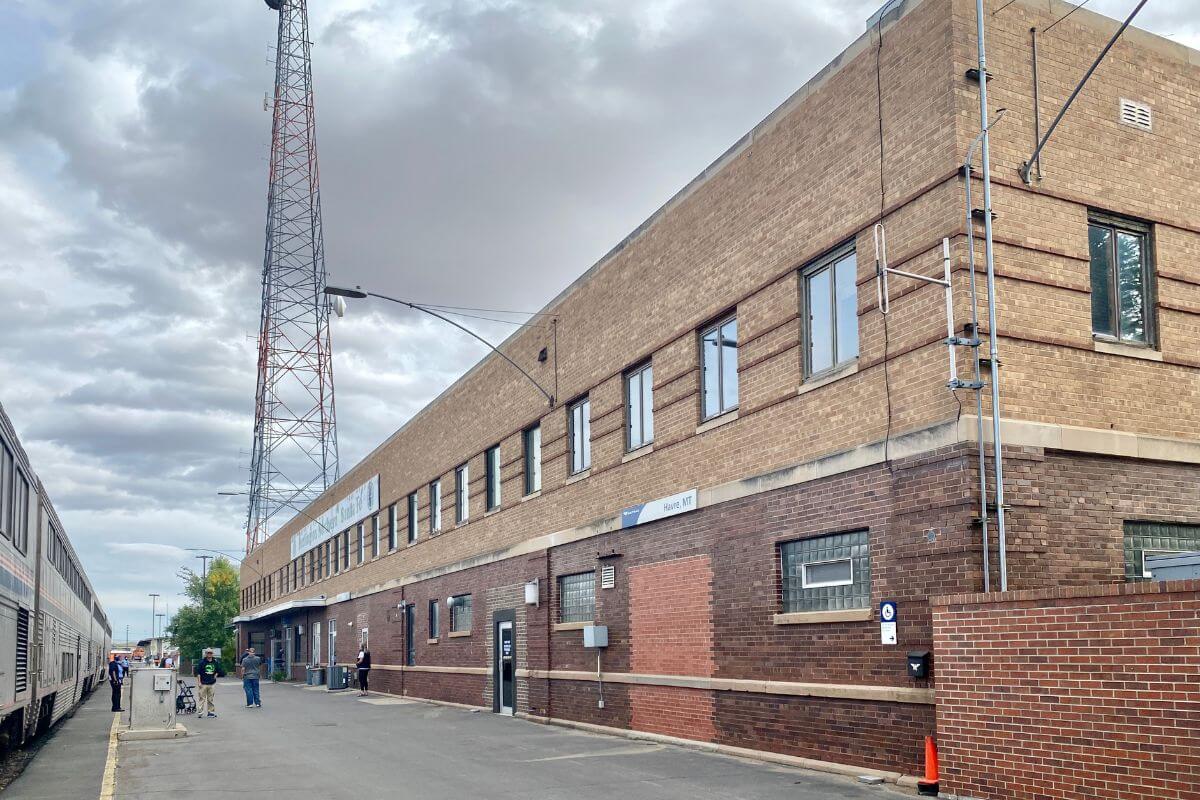
The Havre station in Havre, Montana, serves as a pivotal point, functioning as a train station, refueling, and service stop for Amtrak’s Empire Builder.
The station is owned by BNSF Railway, it stands prominently at 235 Main Street, Havre, Montana.
Havre’s roots as a railroad town trace back to the late 1880s, initiated by the Great Northern Railway.
The original train station began as a renovated boxcar before the construction of the first permanent station in 1904.
Since then, Havre’s station has evolved into a crucial stop along the railway, serving both travelers and the operational needs of trains passing through this historic town.
The Havre station is not just a stop along the Empire Builder route; it’s a living testament to the enduring legacy of the railroad in this vibrant Montana town.
9. Libby Train Station
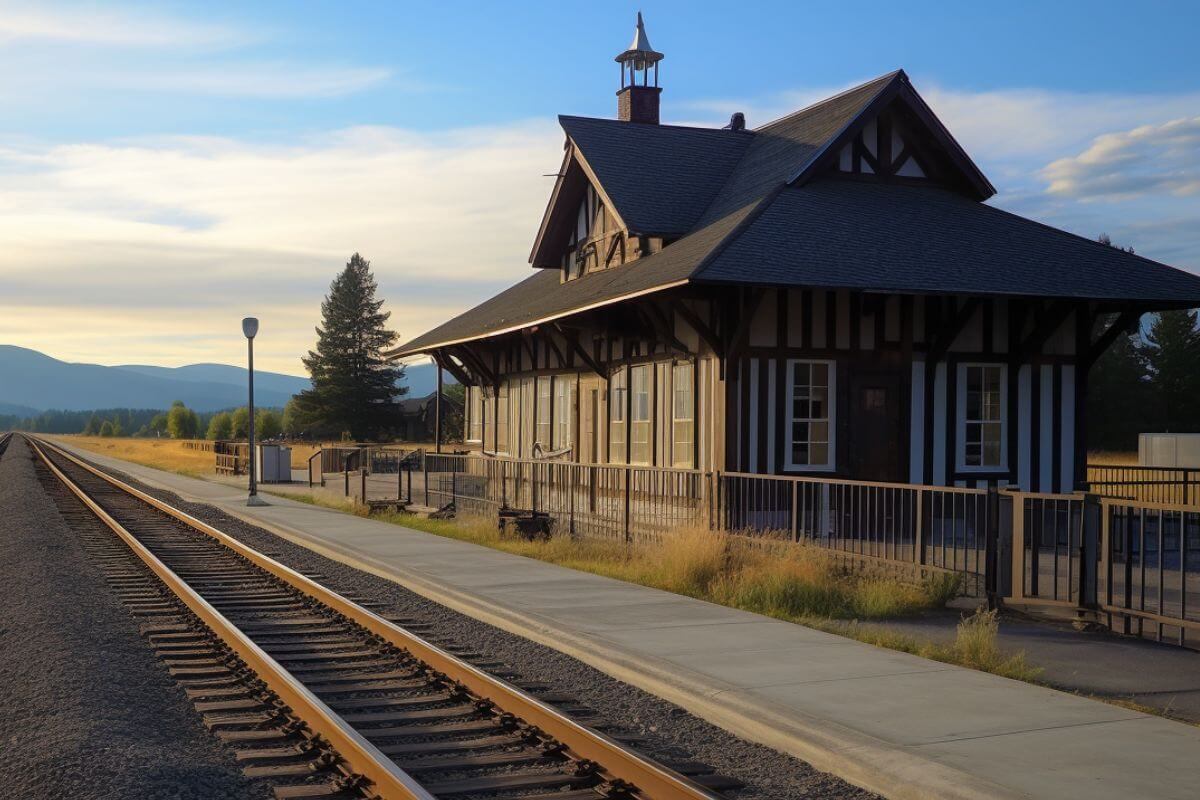
The Libby station in Libby, Montana, is a crucial rail stop along Amtrak’s Empire Builder route.
This railway station boasts features including an uncovered side platform, an enclosed waiting area, restrooms, and a payphone available during station hours, catering to the needs of travelers passing through.
With historical roots dating back to the early 20th century, the station was constructed by the Great Northern Railway.
It comprises a platform and a small Swiss chalet-style building functioning as a waiting room, complemented by a former, currently unused, southern platform.
Over the years, the station has retained its historical charm while providing essential rail services to the local community, solidifying its importance as a vital transportation hub in the region.
10. Malta Train Station
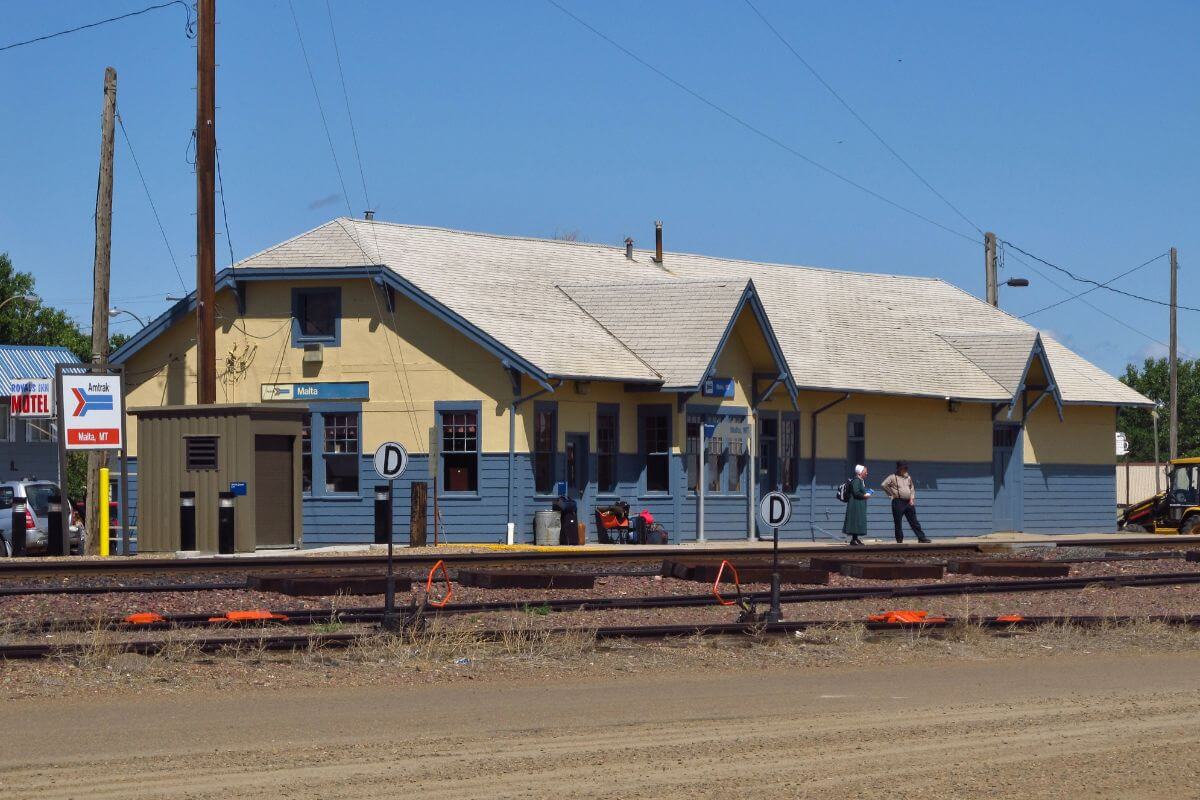
Malta, nestled east of the Fort Belknap Reservation, is a charming town with a train station reminiscent of those in Libby and Cut Bank.
The station has also a unique Swiss Chalet architectural style, complete with clipped gables and substantial overhangs supported by decorative brackets, providing shelter for waiting passengers.
It’s a unique blend of form and function, serving as a waiting area for travelers catching the next train, as well as an office for BNSF crews tasked with maintaining tracks along the Empire Builder line.
This duality adds an extra layer of intrigue to an already captivating destination, making it a must-see for anyone with a penchant for historical architecture and a love of train travel.
11. Shelby Train Station
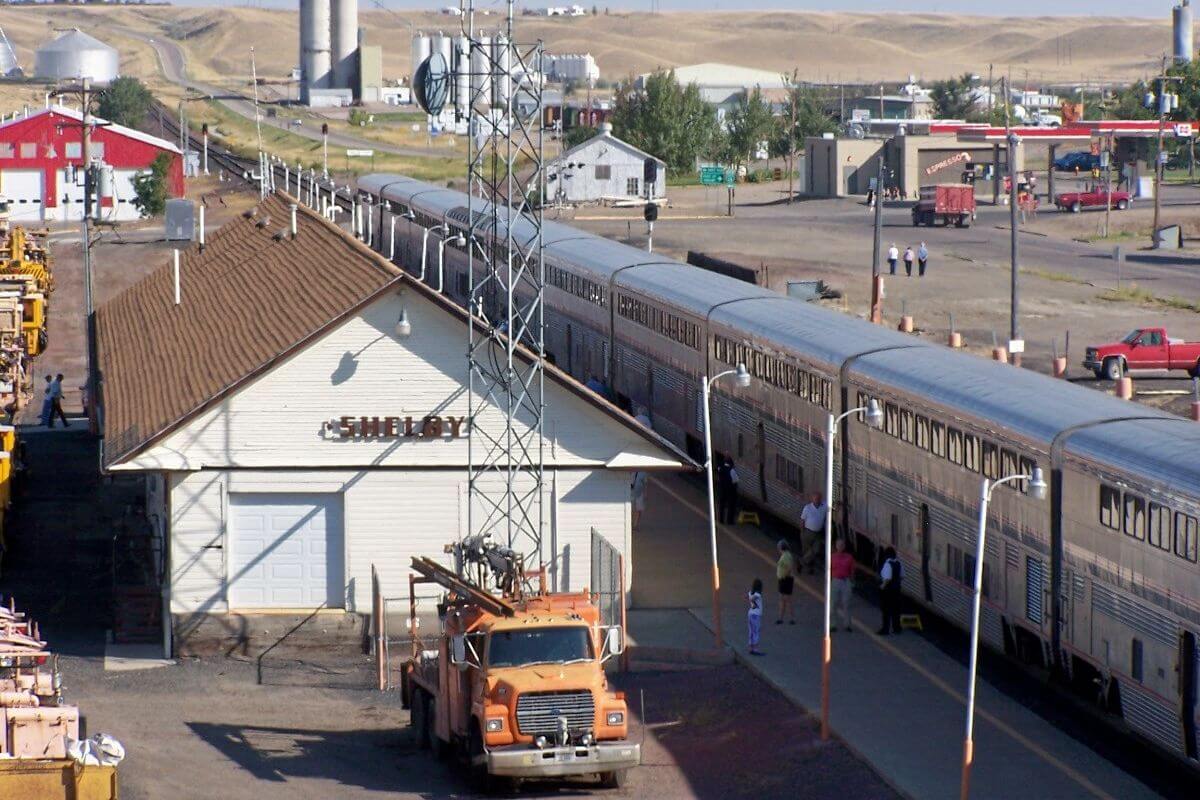
The Shelby, MT train station is a modest yet pivotal structure at a significant railroad junction in Montana.
Established in 1891 by the Great Northern Railway, it serves as a vital connection point for routes leading to Great Falls, MT, and Alberta, Canada.
This single-story wooden station functions as a waiting area for the Amtrak Empire Builder and houses offices for BNSF employees, facilitating both passenger travel and the operational needs of the railway.
Located in the “Golden Triangle,” known for its fertile farmlands, Shelby benefits from its position as the railroad and station play pivotal roles in transporting harvested produce.
The BNSF railroad efficiently moves commodities like barley, wheat, and mustard seeds from surrounding farms, highlighting the station’s crucial role in supporting the agricultural economy of the region.
12. Whitefish Train Station
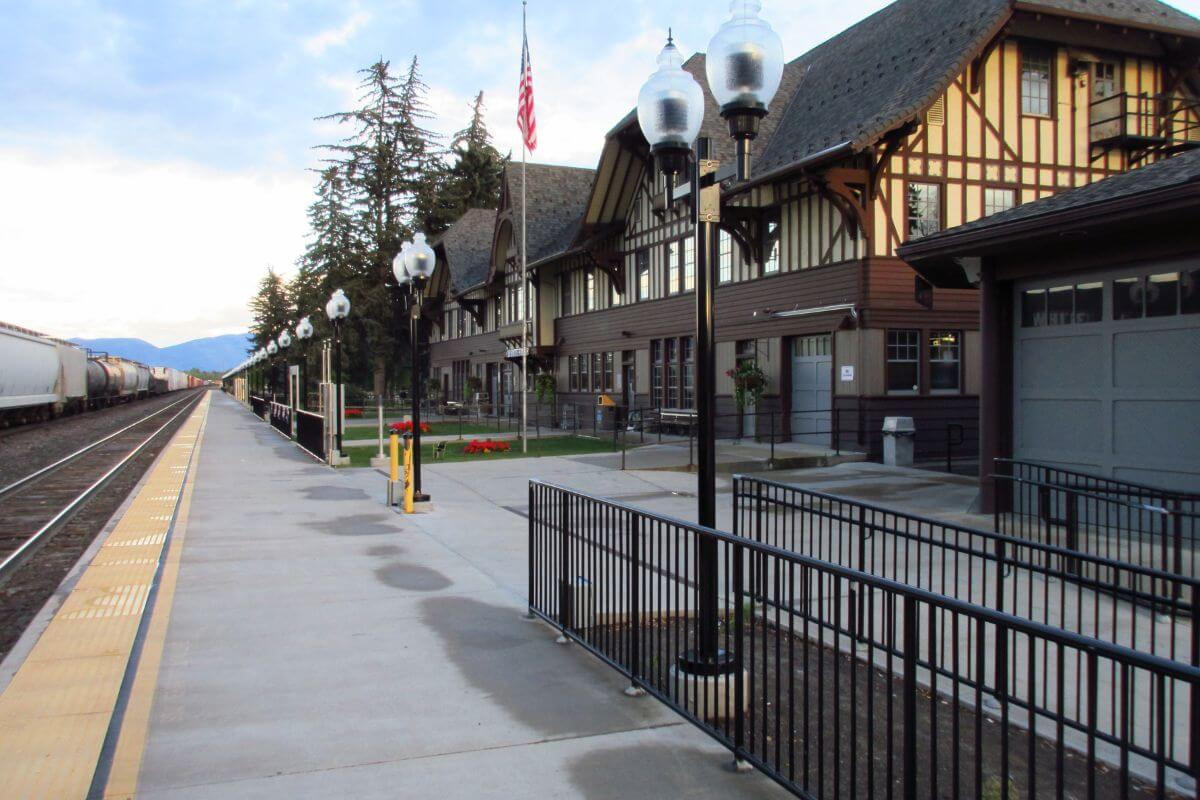
The visually striking Whitefish, MT train station stands proudly along the Empire Builder line, boasting architectural charm with its 1928 Craftsman and Alpine-style construction.
Notable features like timber supports clipped gable roofs, and dormers contribute to its distinct and appealing aesthetic.
Abandoned by BNSF Railway in the 1980s, this station saw a remarkable restoration led by the Stumptown Historical Society.
Today, the station serves multifaceted purposes, functioning not just as a station but also housing a museum, offices, and spaces for local vendors, preserving its historical essence while adapting to contemporary needs.
Recognized for its significance, the Whitefish train station earned a place on the National Register of Historic Places in 2002.
It underscores its profound historical and architectural importance within the region, standing as a testament to the area’s rich railroad heritage.
13. Wolf Point Train Station
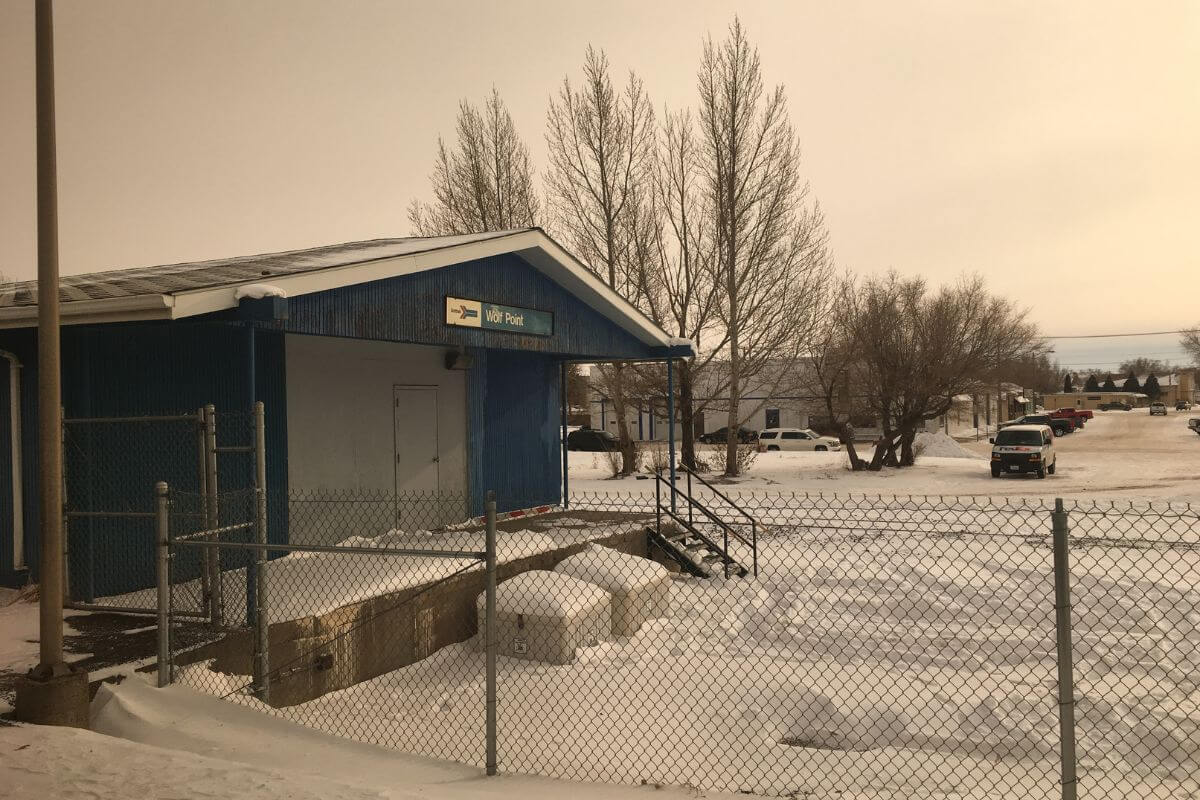
The Wolf Point train station, positioned along the Missouri River and BNSF railroad tracks, was built in 1963 as a replacement for an earlier depot.
In 2021, Amtrak introduced enhancements, including a new platform, improved lighting, and enhanced accessibility features, modernizing the station for travelers.
Wolf Point holds historical significance as a refueling stop for steamboats and underwent substantial growth from a trading post to a significant community upon the arrival of the railroad.
Today, the station remains an attraction for visitors, notably via the Amtrak Empire Builder line train, connecting travelers to the town’s vibrant culture.
The town hosts the Wild Horse Stampede, Montana’s largest rodeo, showcasing Wolf Point’s lively spirit and cultural events.
This annual celebration highlights the region’s heritage and offers visitors a glimpse into the town’s vibrant traditions, drawing travelers via the Amtrak service and capturing the essence of Wolf Point’s vibrant community life.
Montana Train Stations Final Thoughts
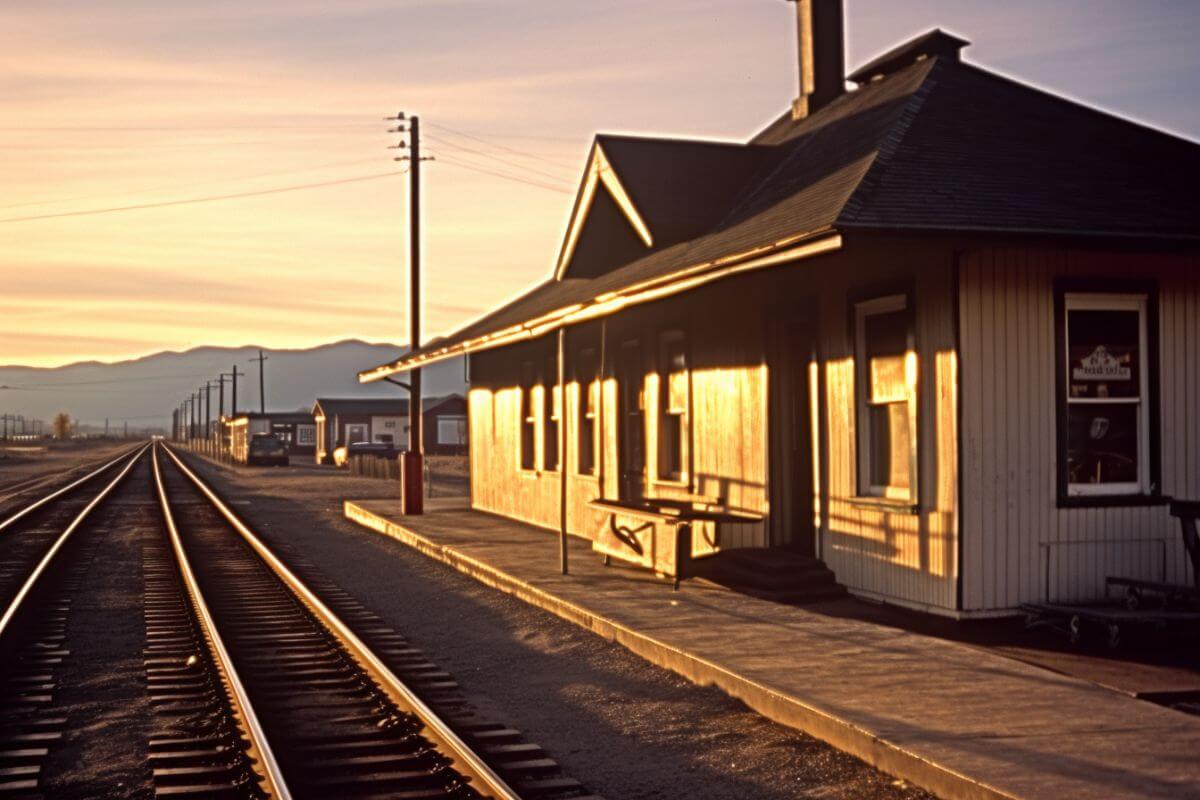
I’ve had the pleasure of visiting the diverse array of train stations in Montana, and each one carries its unique historical significance and architectural features.
These stations play a pivotal role as stops along the Amtrak Empire Builder line, connecting various towns and showcasing the state’s rich railway heritage.
The architectural styles of these stations range from Swiss chalet designs to Craftsman and Alpine influences, adding distinct character to each one.
I’ve been impressed by the efforts made by organizations and historical societies to preserve and restore these stations, highlighting their cultural and historical value within their respective communities.
These stations have an impact beyond just being transportation hubs, as they also serve as cultural landmarks contributing to Montana’s identity and tourism appeal.
The Montana train stations are truly a reflection of the state’s rich history and architectural diversity.
Montana Train Stations FAQs
1. Does Montana Have Any Passenger Trains?
Yes, Montana has passenger train services, primarily serviced by Amtrak.
Amtrak’s Empire Builder train is the only passenger train service in Montana, which travels through several cities in the state.
2. What Cities in Montana Does Amtrak Go To?
Amtrak’s Empire Builder, a major train route, serves several cities in Montana.
Some of the notable cities and towns in Montana on the Empire Builder route include Whitefish, West Glacier, Essex, East Glacier Park, Browning, Cut Bank, Shelby, Havre, Malta, Glasgow, and Wolf Point.
These stations serve as key stops along the Empire Builder’s journey through Montana.
3. Can You Travel by Train to Montana?
Yes, you can travel to Montana by train. Amtrak’s Empire Builder route passes through Montana, offering service to various cities and towns within the state.
The Empire Builder connects major cities like Chicago in Illinois to Seattle in Washington, with stops in Montana at multiple locations
4. Do You Need a Car to Visit Montana?
Having a car can be beneficial for exploring Montana, especially in more remote areas, or for reaching specific attractions not easily accessible by public transportation.
However, it’s not an absolute necessity, especially if you plan to visit cities or areas served by public transportation like Amtrak trains or local buses.
Don’t stop here! Here are more articles that will keep you informed about Montana:
- Public Transportation Choices in Montana
- Montana’s Airport Network
- Montana Trips With an Electric Car
- https://www.mdt.mt.gov/rail/
- https://mdt.mt.gov/other/webdata/external/planning/maps/railmap.pdf
- https://www.quincyil.gov/explore/quincy-transportation/amtrak
- https://leg.mt.gov/content/Committees/Interim/2019-2020/Transportation
- https://commons.wikimedia.org/wiki/File:BEFORE_Cut_Bank.jpg
- https://www.flickr.com/photos/akalat/3773680170
- https://www.flickr.com/photos/tattoodjay/14417604863
- https://www.flickr.com/photos/thewestend/379344187
- https://www.flickr.com/photos/warrenlemay/51582558143
- https://www.flickr.com/photos/mytravelphotos/14287350449
- https://www.flickr.com/photos/jstephenconn/2646408471
- https://www.flickr.com/photos/snowmail/29566464454
- https://www.flickr.com/photos/thewestend/39437463121

